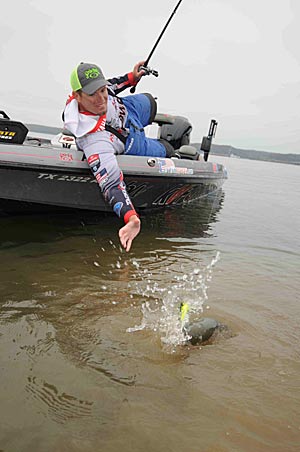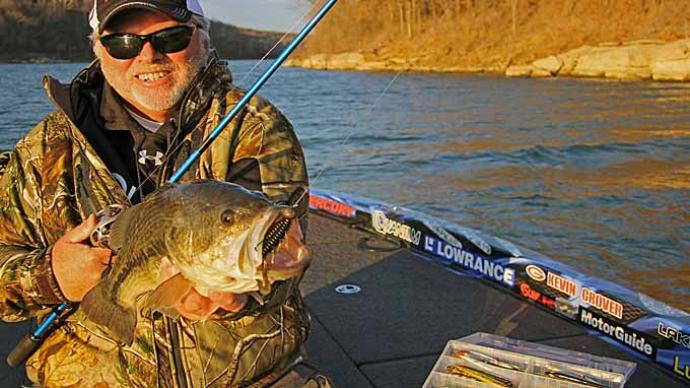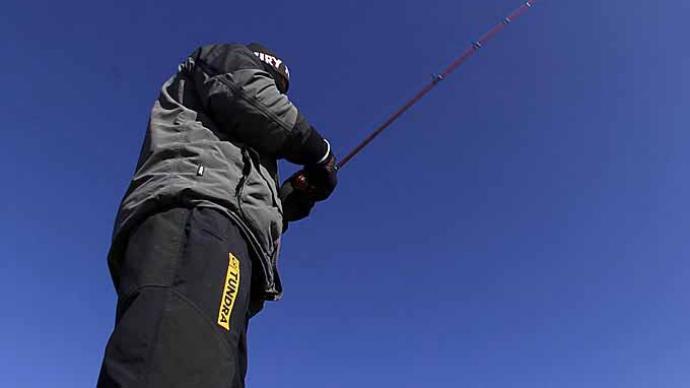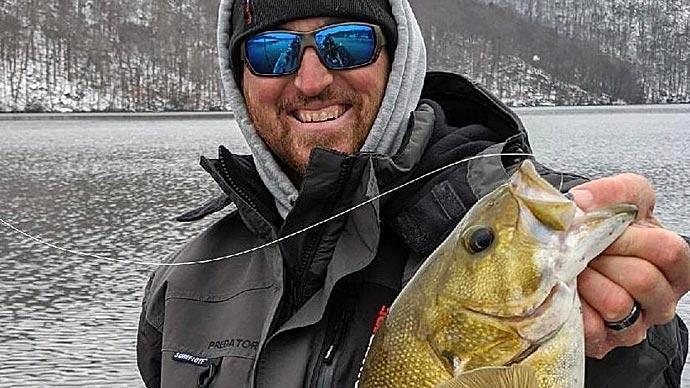
A mixture of cold water and mud creates one of the toughest conditions bass anglers will encounter in late winter and early spring.
“I don’t think the fish feed very often when it is like that,” Bassmaster Elite Series pro Keith Combs says. “It is probably as close to a hibernation stage as a bass ever gets in.”
The lack of visibility in the muddy water makes it more challenging for bass to hone in on food, but the fish still have to eat. “You can still catch them, and you can catch big ones,” Combs says. “It takes a lot of trickery and patience to catch one in that muddy water.” He suggests your bait has to come “very close” to the fish, and you have to make the fish react to your lure.
The dead of winter is the most challenging time to catch bass in cold, muddy water, so Combs tries to find the clearest water available. He notices his odds of catching bass in the mud are better during late winter or the prespawn in the early spring.
The Texas pro prefers fishing cold, muddy water in fair weather. “Give me sunny and give me calm weather,” he says. He prefers these conditions because the calm and sunshine help increase visibility in the muddy water.
The dirty water also absorbs the heat of the sunshine better. “Muddy water will warm up a lot faster than clear water, but it is also going to cool down faster,” Combs says. “It seems like you get wide swings in temperatures in muddy water, especially during the prespawn.” So Combs avoids fishing muddy water, if possible, on cloudy days when the water temperature drops.
Combs depends on a spinnerbait when he is forced to fish cold, muddy water. “There is nothing better in that situation,” Combs says. “The first thing you must do then is get your bait noticed. You have more opportunities to get a spinnerbait noticed, and you can fish it so slowly.”
Combs gets his spinnerbaits noticed by picking versions with bright colors for more flash and equipped with a single Colorado blade for increased vibration. He slow rolls the lure so the blades barely turn throughout his retrieve.
A Strike King KVD 2.5 Squarebill Crankbait is another lure Combs fishes in cold, dirty water. He suggests it is comparable to a spinnerbait because the crankbait’s wide-wobbling action generates a lot of vibration. “You can crank it slowly, and it comes through cover well,” he says. “That time of year, I almost always try to weed it through some brush or over some grass.”
According to Combs, the key to presenting lures in cold, muddy water is a “very slow” retrieve. The slow roll presentation works best for Combs with the blade bait, and a slow pull produces the best for him when retrieving the squarebill. The seven-time Bassmaster Classic qualifier slowly reels his crankbait, and when it bumps into something, he pulls the lure along with his rod to weave it through the cover.
Combs believes targeting cover is essential when fishing cold, muddy water because bass will position tight to cover then. His favorite targets for muddy-water bass are isolated pieces of cover such as a brush pile, log, or a lone boulder. “I have had situations where I have made my whole day fishing one log or brush pile in a muddy creek arm,” Combs says. “I would catch one off of it, come back an hour later, and catch another one or two off it. A prime piece of cover can replenish throughout the day.”

Making multiple casts to cover is another trick for tempting bass in frigid, muddy water. “You are going to have to be very thorough,” Combs says. “If you get in the right stretch of a creek, you need to be very, very thorough.”
Fishing shallow is another key to catching cold, muddy water bass. Combs presents his lures close to the bank or high in the water column. He believes the water temperature is colder lower in the water column during muddy conditions, so he tries to keep his spinnerbait within 3 feet of the surface when fishing around standing timber or over brush piles.
Catching bass in cold, muddy water requires a different mental approach. “You have to get in the right mindset where you know you are not going to get a ton of bites, and you have to make the most of every bite,” Combs says. “You can still catch a huge bag of fish. You have to go slow and be patient.”
Combs notices the most significant mistake anglers make is avoiding a spot with cold, muddy water or lacking confidence in fishing it when the weather is sunny and calm. “There are still bass there. You are just not going to get that many bites,” Combs says. The two-time B.A.S.S. winner admits he has made the same mistake of pulling into an area on a calm, sunny day and leaving without fishing because he thought the spot was too muddy.
After some successes in cold, muddy water, Combs stays and plays in the mud when the weather is right.




